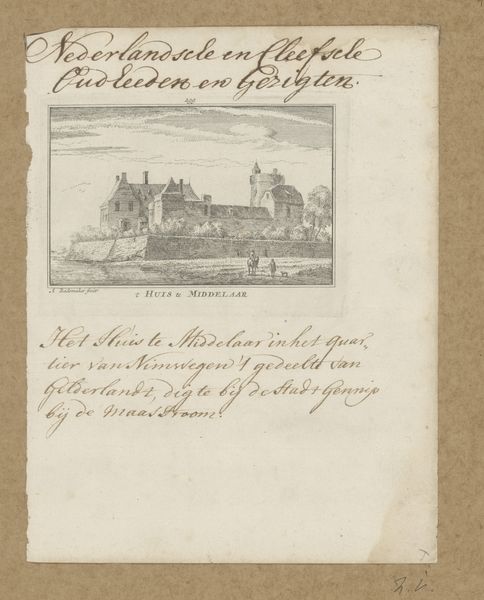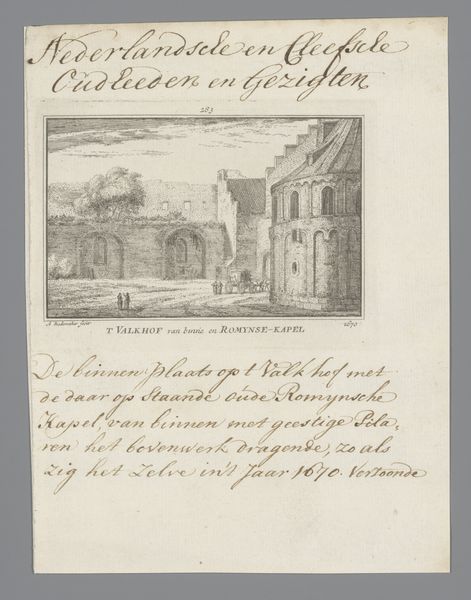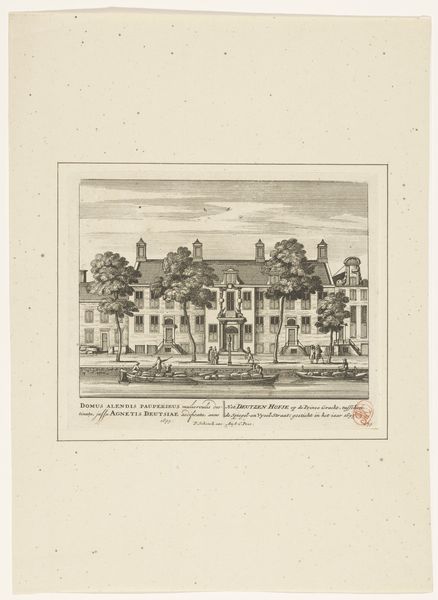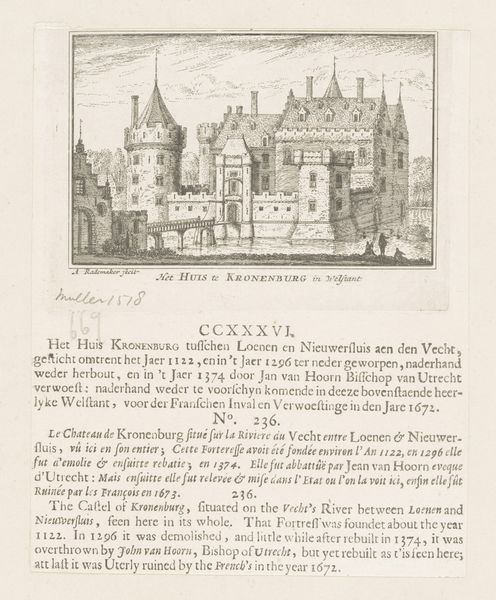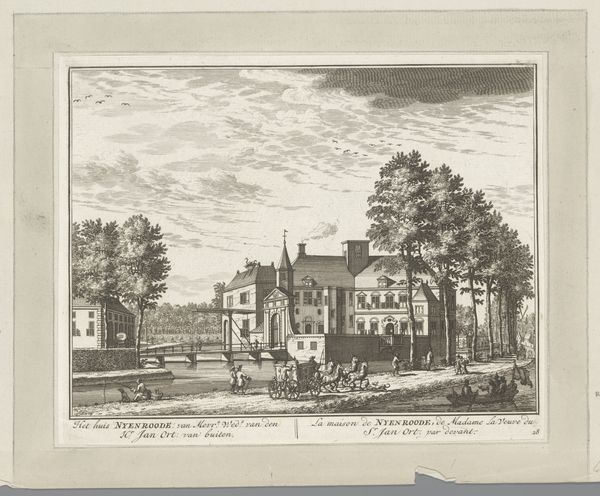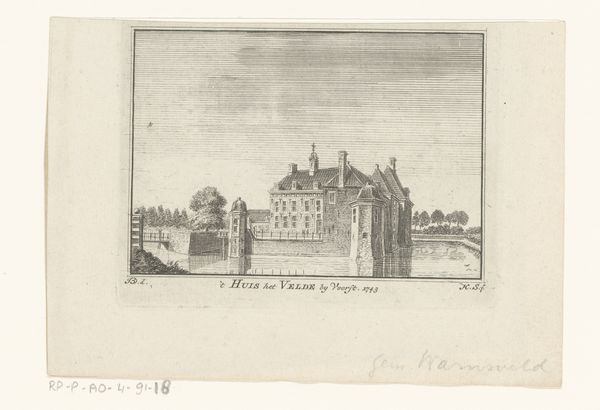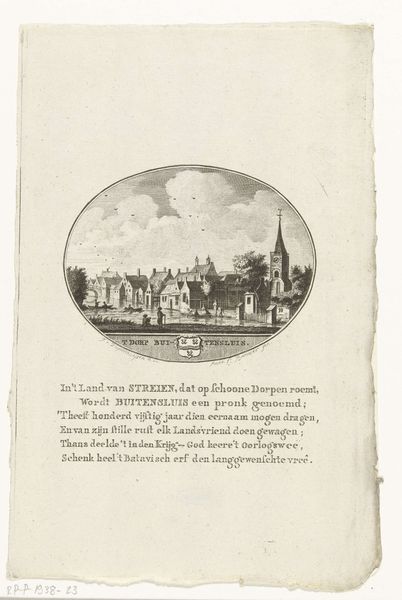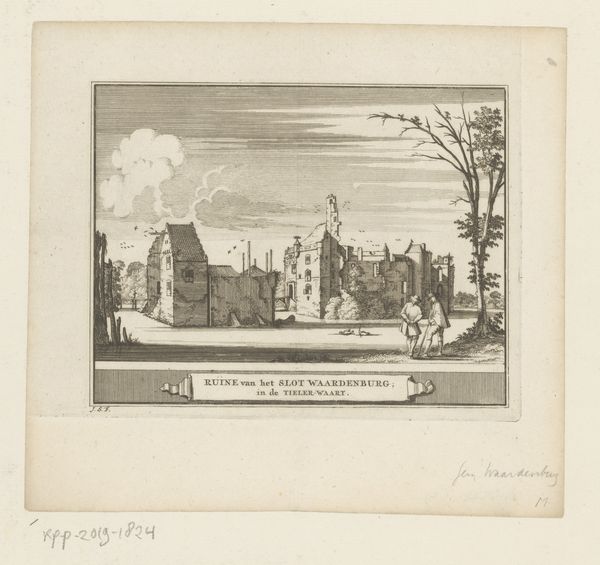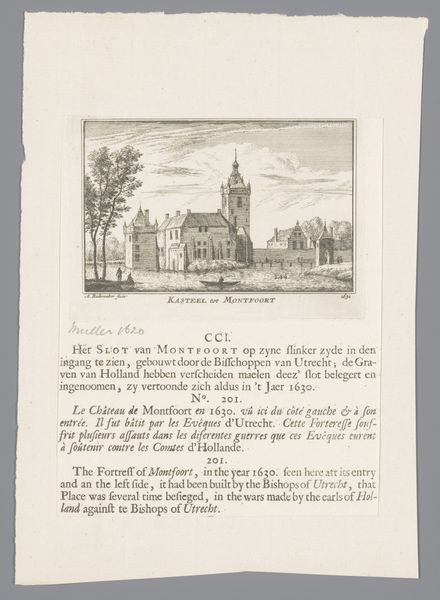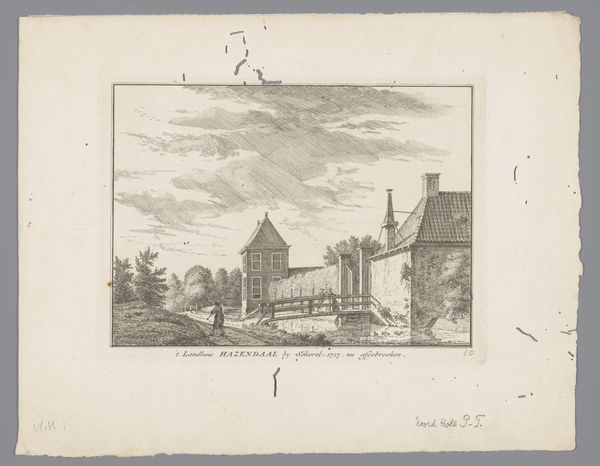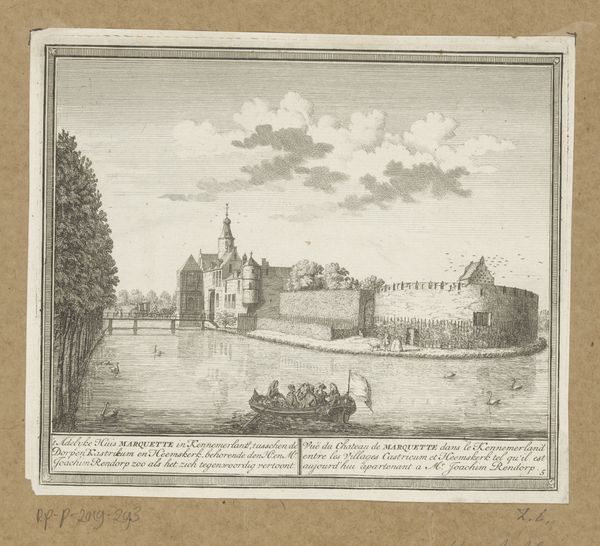
etching, paper
#
baroque
#
dutch-golden-age
#
etching
#
landscape
#
paper
#
cityscape
#
genre-painting
Dimensions: height 84 mm, width 115 mm, height 198 mm, width 149 mm
Copyright: Rijks Museum: Open Domain
Curator: So, what are your initial thoughts on Abraham Rademaker’s “View of Rosendael Castle,” an etching from around 1725? The work is printed on paper and is currently held in the Rijksmuseum collection. Editor: Well, I'm struck by how detailed it is, especially considering it’s an etching. The artist was able to use fine line to achieve delicate precision. How can we dive deeper in interpreting this work, taking a materialist perspective? Curator: Let's consider the socioeconomic context of etching. Rademaker mass produced printed images in early modern Europe for widespread consumption by different kinds of publics. His etchings helped popularize and make accessible landscapes, castles, and other images that had previously been enjoyed and owned by a few, usually elites. How does the print medium here contribute to a dialogue about cultural heritage, democratization, or other themes? Editor: I see what you mean! By using etching, Rademaker transformed something exclusive into something more accessible. The consumption of such images moves from an individual experience to an act of collective viewing. Curator: Precisely! The act of creation and distribution itself becomes a statement, reflecting the changing dynamics of Dutch society. Is this artistic labor challenging art historical understandings of what makes this a ‘masterpiece’ or who can afford to participate in this type of cultural production? Editor: Definitely something to consider. It really shifts my perception of 18th-century Dutch landscape art. Thinking about its means of production makes me value it in a completely different way. Thanks! Curator: Glad to hear it. Examining the material conditions opens up new ways of interpreting even familiar works.
Comments
No comments
Be the first to comment and join the conversation on the ultimate creative platform.
